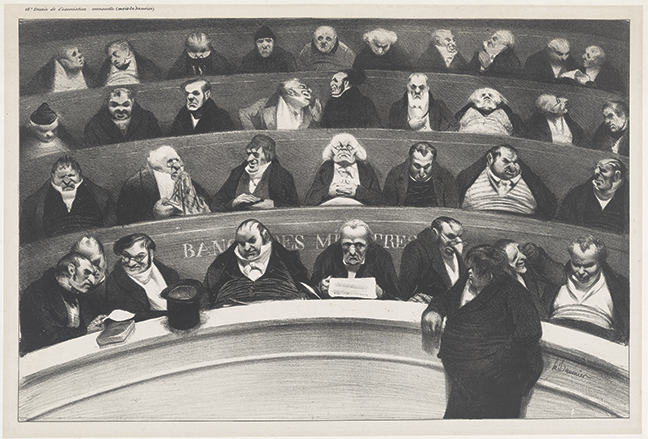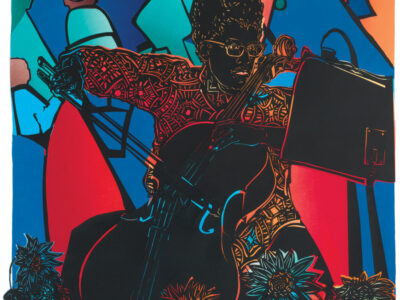The Arthur Ross Gallery celebrates its 35th anniversary with an exhibition of dazzling prints.

“Noa Noa (Fragrant Scent),” by Paul Gauguin, 1893-94. Image Courtesy of Yale University Art Gallery, The Arthur Ross Collection.
The names are not exactly obscure: Cézanne. Degas. Gauguin. Daumier. Manet. Matisse. For starters.
“It really is a sort of ‘19th Century’s Greatest Hits of the Arthur Ross Collection,’” says Lynn Marsden-Atlass, executive director of the Arthur Ross Gallery, which is kicking off its 35th anniversary year with an exhibition of 30 Impressionist and Post-Impressionist prints from the late philanthropist-alumnus’s collection. Impressions of Ink: Prints from the Arthur Ross Collection runs from January 13 through March 25.
After going through the history of the exhibitions drawn from the Arthur Ross Collection (now housed at Yale), “I realized that one area we hadn’t mined was the 19th-century works, primarily French,” says Marsden-Atlass. “When Yale actually showed the whole collection and did a big catalogue [in 2015], I made a request for 30 masterworks from that time period—all prints, all focused around major names in the collection.”

“Nadia in Sharp Profile,” by Henri Matisse, 1948. Image Courtesy of Yale University Art Gallery, The Arthur Ross Collection.
A key to Impressions of Ink is the medium itself: printmaking, which grew increasingly popular in the late 19th century as the technology improved and artists worked with master printmakers. (To highlight that aspect of the exhibition, Heather Gibson Moqtaderi, the gallery’s assistant director and associate curator, is putting together a Print Day at Penn that will showcase area printmakers, though so far no date has been set.)
On March 15, the Ross Gallery is sponsoring a symposium moderated by Marsden-Atlass and André Dombrowski, associate professor of art history at Penn.
“It will present brand-new scholarship on works in the collection,” says Marsden-Atlass, and will feature Suzanne Boorsch, curator of prints and drawings at Yale University Art Gallery; S. Hollis Clayson, professor in the humanities at Northwestern; and Darcy Grimaldo Grigsby, professor of art history at the University of California, Berkeley.

“Le ventre législatif,” by Honoré Daumier, 1834. Image Courtesy of Yale University Art Gallery, The Arthur Ross Collection.
In some ways the artistic outlier in this exhibition is Daumier, whose work was “more in newsprint and offered sort of tongue-in-cheek statements on political and social issues,” says Marsden-Atlass. The others “were the radical artists of the period. They focused on contemporary life, using contemporary subject matter and the influence of various things.”
Among her personal favorites are Matisse’s striking “Nadia in Sharp Profile” (whose creation in 1948 makes it the most recent of the lot) and Gauguin’s “really lovely” woodcut, “Noa Noa (Fragrant Scent).” Then there’s Pissarro’s 1896 lithograph “The Vagabonds,” which Marsden-Atlass picked in part because of its associations with immigration.
“It’s a very 19th-century image,” she notes, “but at the same time it has some resonance at the moment.” —SH




